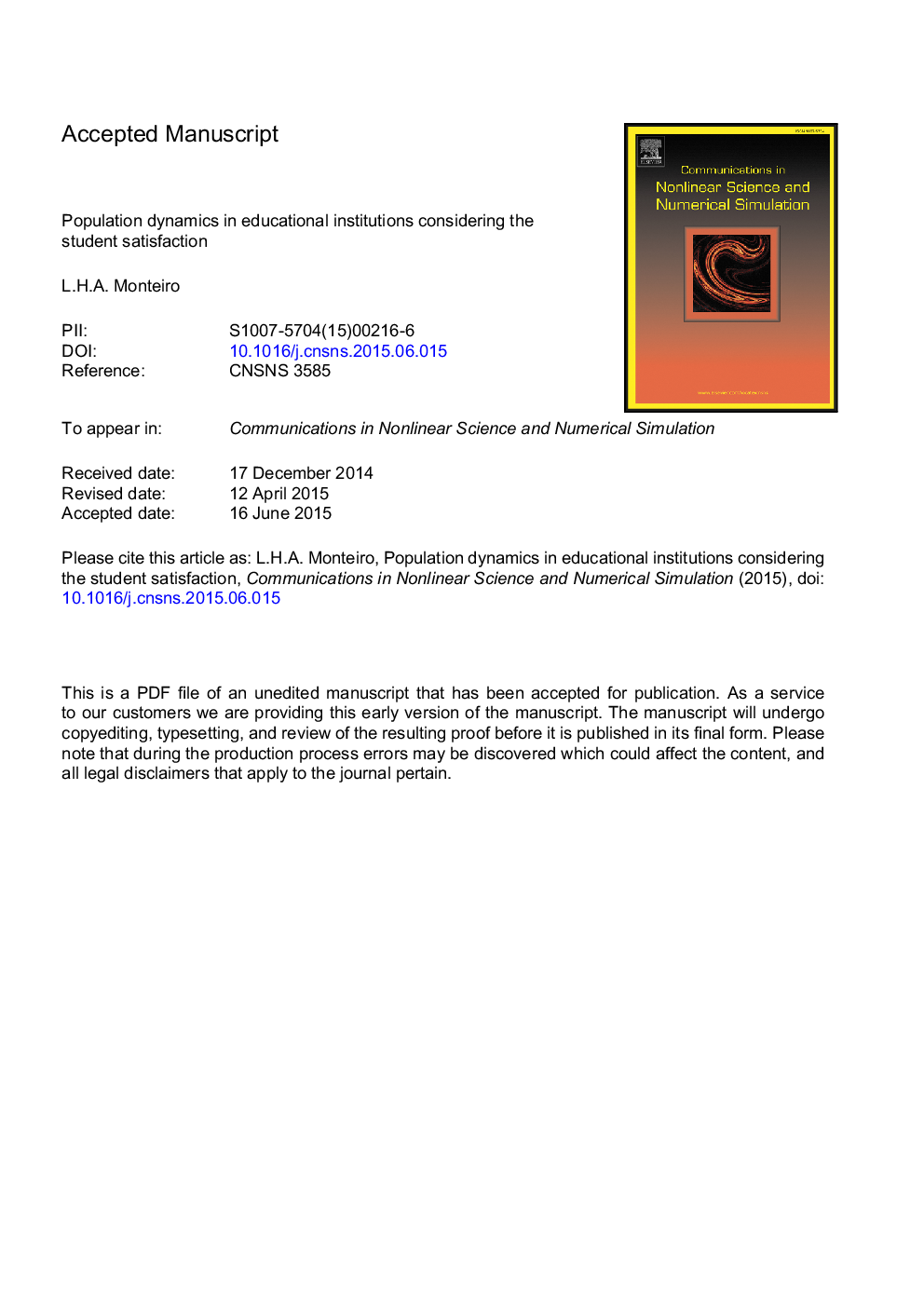| Article ID | Journal | Published Year | Pages | File Type |
|---|---|---|---|---|
| 7155304 | Communications in Nonlinear Science and Numerical Simulation | 2016 | 19 Pages |
Abstract
Here, a discrete-time mathematical model representing the temporal evolution of the number of students in an educational institution is proposed and analyzed. In this approach, the students are divided into two groups: the ones who are satisfied with their academic performances and learning environments and the ones who are not. The population dynamics of these two groups is ruled by the following assumptions: all newly enrolled students are supposed to be satisfied; students can spontaneously modify their state of satisfaction; (dis)satisfaction can be propagated via social contacts as contagious diseases; student dropout primarily reduces the dissatisfied population; and both kinds of students can earn their diplomas. Analytical and numerical results are obtained and discussed from an institutional management point of view.
Related Topics
Physical Sciences and Engineering
Engineering
Mechanical Engineering
Authors
L.H.A. Monteiro,
